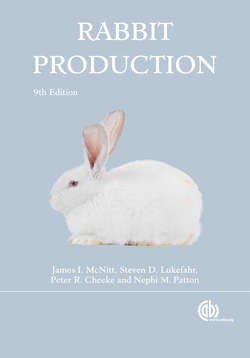Читать книгу Rabbit Production - James I McNitt - Страница 21
На сайте Литреса книга снята с продажи.
Asia
ОглавлениеChina is one of the world’s major rabbit-producing countries. Rabbit meat from China has been exported to Europe and North America quite extensively. Since the 1980s, major emphasis has been on Angora wool production. China is the source of approximately 80 percent of the Angora wool used in the textile industry, producing about 4000 metric tons annually. Since the average wool yield for Chinese Angora rabbits is about 200 grams per annum, it appears that about 20 million Angoras are raised in China. Meat is a by-product of the wool production, although about half the rabbit herds in China produce strictly meat rabbits. In rural villages, rabbits in China are not usually fed a pelleted concentrate diet. Instead, they are fed forages, including vegetable tops and water weeds that are often wilted to reduce the moisture content (Fig. 2.3). Various byproducts, such as wheat bran, rice bran, or corn bran, are fed as a moist mash supplement. Because of the huge human population and the need to upgrade the diet with high quality protein, and because of rising cereal grain and fuel costs, it is likely that rabbit production will be of increasing importance in China as a means of converting roughages to human food.
Fig. 2.3. In some areas, rabbits are fed various types of greens including the berseem that this man has harvested for feeding to his rabbits. (Courtesy of S.D. Lukefahr)
Rabbit production is gaining in importance in other Asian countries, such as Indonesia, South Korea, and Vietnam. Because of low labor costs, Hong Kong, Taiwan, and South Korea are important markets for rabbit skins and furs for garment manufacture.
A major effort to promote rabbit raising in Indonesia has its basis in the need to increase food production in that densely populated country. Village rabbit raising is a potential means of providing protein to low income people who consume a nutritionally inadequate rice-based diet. Abundant supplies of rice bran are available that, along with local forages, can provide the feed needed for rabbits.
In India, meat rabbit production is also becoming more popular. The raising of Angora rabbits for wool is increasing in several northern states in the foothills of the Himalaya Mountains. This is being encouraged as a cottage industry to increase income levels of villagers.
